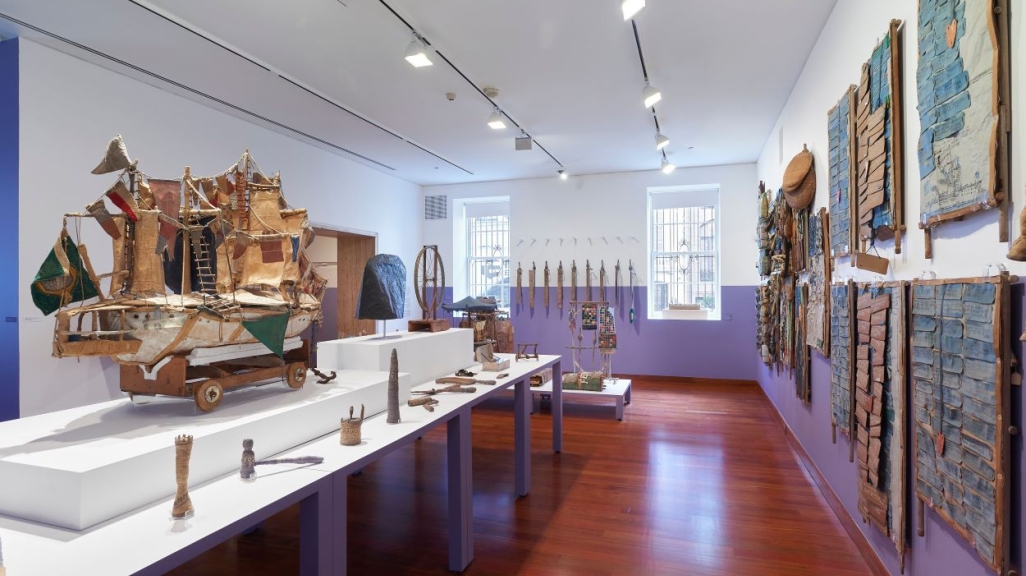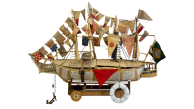ARTFORUM Reviews the ''Poignant Selection'' of Bispo do Rosario's Works in AS Exhibit
ARTFORUM Reviews the ''Poignant Selection'' of Bispo do Rosario's Works in AS Exhibit
"Teetering between the real and the imagined, these objects [...] possess a ghostly, ephemeral aura," said the art publication in its May issue preview.
Around midnight on December 22, 1938, Afro-Brazilian artist Arthur Bispo do Rosario (1909–1989) was, he said, visited by seven angels who sent him on a mission. Days later, he appeared at the door of the São Bento Monastery in Rio de Janeiro, introducing himself as Jesus.
In January 1939, he was diagnosed as schizophrenic; he would go on to spend time in numerous psychiatric facilities, including Rio’s Colônia Juliano Moreira, a notoriously brutal hospital where, starting in 1964, he lived out the rest of his days. Voices in his head commanded him to remake and organize the stuff of the world in preparation for Judgment Day, when he would come face-to-face with God.
That chorus never quieted and kept him from sleeping, relentlessly urging him to create what would total, after decades of confinement, more than one thousand works of art that, in his words, “represent the existence of Earth.” [...]
It must be noted that Bispo refused to call his productions art, perhaps deeming it a too-frivolous category for his divine purpose. For him, catching the eye—being seen—was necessary in order to be saved. He sewed a cape, a scarf, a bolero, and a red-and-black beaded crown after Exu, a powerful spirit in the Afro-Brazilian religions of Quimbanda and Umbanda.
He also sewed himself Untitled (Manto da apresentação) (Untitled [Annunciation Garment]), a handsome, regal cloak that he planned to wear on the day he was finally presented to God. He embroidered it with an assortment of images: of a phonograph, a stool, a trolley cart, train tracks, a seesaw, letters, numbers, and a heart. On the inside of the piece, he stitched the names of hundreds of women whom he wanted to take along with him to heaven. One assumes he wished to live in heaven surrounded by as much beauty as he’d created here on Earth.
Art at Americas Society presented the first solo exhibition of the Afro-Brazilian artist in the United States.










